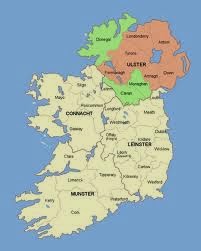DEATH WAS ALWAYS WITH THEM
Thoughts and Ramblings
I feel as though I have advanced beyond the mere collection of dates.
Many questions have arisen like: how did my ancestors live, and of course, how did they die? How did my ancestors deal with the death that was all around them? What about medical terms, herbs, influenza, cholera, tuberculosis, fevers, death at childbirth, burial methods, gravestones, the culture of death, and on and on and on!
Some readers may not approve of some of the photographs that I have chosen to post.
However, it's my blog. I need to tell the story as it was and is - so on with the
Thoughts and Ramblings!
Many questions have arisen like: how did my ancestors live, and of course, how did they die? How did my ancestors deal with the death that was all around them? What about medical terms, herbs, influenza, cholera, tuberculosis, fevers, death at childbirth, burial methods, gravestones, the culture of death, and on and on and on!
Some readers may not approve of some of the photographs that I have chosen to post.
However, it's my blog. I need to tell the story as it was and is - so on with the
Thoughts and Ramblings!
FUNERALS
I remember funerals being taken seriously. I was young when my paternal grandfather died in 1964, but I remember it as if it were yesterday. I remember the somber reality of death that was with our family and community. I remember the 'quiet' in the funeral home. The reverence.
I remember the funeral. Family. Love.
I remember the funeral. Family. Love.
Within the plethora of photographs that belonged to my parents, I have found many with the family members standing/posing at the gravesite of their departed.
Families. Together. What were the messages behind these photographs? Why do families no longer (or seldom) get photographed in this manner?
Families. Together. What were the messages behind these photographs? Why do families no longer (or seldom) get photographed in this manner?
This photo was taken after the burial of my "Pappy"
(Paternal Grandfather - William Luther Allison)
The photos below are from my
Maternal Grand Uncle's Funeral
SGT. Sim Herron (1918-1945)
Died at the age of 27 in WWII Co E 27th Infanty Div
I remember hearing my family talk of Sim's death, but I don't recall any 'specifics' -
they usually just spoke of dying at such a young age. Tragic.
Memorial Portraiture
Beginning in the mid-1800s, post-mortem photography (or memento mori) was a popular way to honor and remember
the dead. Most photographs were taken shortly after
death, and could look incredibly life-life, especially if
the deceased was propped up into a standing position.
Post-mortem photos of children were particularly
common, perhaps because their mortality rate was high.
So, when I ran across this photo, and realized the name actually written on the back … well, it's hard to describe. I'm still trying to figure out how I actually feel about this type of photo.
Below is William Luther Allison JR ~ Died at the age of 18 months
(Paternal Uncle)
Birth Certificate states cause of death was flux.
Flux was an excessive flow or discharge of fluid like hemorrhage or diarrhea.
-- From Suttree by Cormac McCarthy, 1992
Childbirth
Childbirth in colonial America was a difficult and sometimes dangerous experience for women. During the seventeenth and eighteenth centuries, between 1 percent and 1.5 percent of all births ended in the mother's death as a result of exhaustion, dehydration, infection, hemorrhage, or convulsions. Since the typical mother gave birth to between five and eight children, her lifetime chances of dying in childbirth ran as high as 1 in 8. This meant that if a woman had eight female friends, it was likely that one might die in childbirth.
Death in childbirth was sufficiently common that many colonial women regarded pregnancy with dread. In their letters, women often referred to childbirth as "the Dreaded apperation," "the greatest of earthly miserys," or "that evel hour I loock forward to with dread." Many, like New England poet Anne Bradstreet, approached childbirth with a fear of impending death. In a poem entitled "Before the Birth of One of Her Children," Bradstreet wrote,
How soon, my Dear, death may my steps attend,
How soon't may be they lot to lose they friend.
Today, most women give birth in hospitals under close medical supervision. If they wish, women can take anesthetics to relieve labor pangs. During the seventeen and eighteenth centuries, the process of childbirth was almost wholly different. In colonial America, the typical woman gave birth to her children at home, while female kin and neighbors clustered at her bedside to offer support and encouragement. When the daughter of Samuel Sewall, a Puritan magistrate, gave birth to her first child on the last day of January, 1701, at least eight other women were present at her bedside, including her mother, her mother-in-law, a midwife, a nurse, and at least four other neighbors.
Most women were assisted in childbirth not by an doctor but by a midwife. Most midwives were older women who relied on practical experience in delivering children. One midwife, Martha Ballard, who practiced in Augusta, Maine, delivered 996 women with only four recorded fatalities. Skilled midwives were highly valued. Communities tried to attract experienced midwives by offering a salary or a house rent-free. In addition to assisting in childbirth, midwives helped deliver the offspring of animals, attended the baptisms and burials of infants, and testified in court in cases of bastardy.
One of my cousins had a grandmother who was a midwife.
I hope to learn more from her concerning the realities
as it was here close to home.
One of my cousins had a grandmother who was a midwife.
I hope to learn more from her concerning the realities
as it was here close to home.
BURIAL POSITIONS
In the words of Louis Simpson:
In this America, this wilderness
Where the axe echoes with a lonely sound,
The generations labor to possess
And grave by grave we civilize the ground.
“We are all the product of things we've never seen and people we never met. In fact, if just one little detail had been changed in their lives, we may not even exist!”
― Melanie Johnston
― Melanie Johnston











I think you are doing a great job of learning from the past and sharing it! This Sunday is decoration at Howard Cemetery of Putnam County and I just did a 'census' of the cemetery. It always leaves me thinking about the young people, the very old people, the times when there are multiple deaths in a short period. As you state, they lived in a way that "death was always with them." and I think, perhaps, we live fuller and more deliberately when we live in such a manner. Putnam County Library is having an author reading and discussion with Joline Petersheim (author of "The Midwife" on Saturday July 12 at 11 a.m. (just saw that)
ReplyDelete